Tools and Guidance Materials
On This Page
Explore our tools and guidance for environmental health programs.
Food Safety

Read the reports and check out the new food safety indicator on state adoption of selected foodborne disease-related provisions from the 2013 Food and Drug Administration (FDA) Food Code.

Infographic on Contributing Factors
Learn about contributing factors to outbreaks and how you can identify them during outbreak investigations.
Infographic on Kitchen Manager Certification
Learn more about restaurant food safety and the importance of kitchen manager certification.
Infographic on Preventing Foodborne Illness
Learn how we help prevent foodborne illness outbreaks by understanding the environmental factors contributing to them.
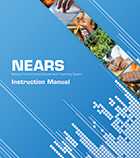
National Environmental Assessment Reporting System (NEARS)
Is your jurisdiction registered? Capture environmental assessment data from foodborne illness outbreaks to help prevent outbreaks associated with restaurants and other food venues.

Findings & Recommendations in Plain Language
Peruse our plain language research findings and recommendations on restaurant food safety topics such as sick food workers, hand hygiene, and kitchen manager certification.

Develop your own studies using our Environmental Health Specialists Network study protocols, data collection instruments, and data collection instructions.
Environmental Health Specialists Network Information System (EHSNIS)
Design your own data collection instruments for environmental health research using this free internet application.
Safe Water
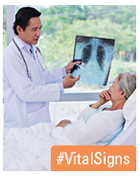
CDC Vital Signs on Legionnaires’ Disease: A Problem for Health Care Facilities
Explore CDC’s 2017 report and resources, including a practical guide, infographic, fact sheet, podcasts, and more.
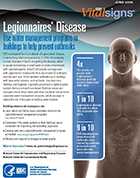
Read CDC’s 2016 report and access resources, including a practical guide, infographic fact sheet, and more.
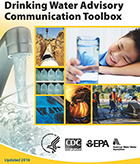
Drinking Water Advisory Communication Toolbox
Access resources to help communities with all phases of water advisories including guidance, recommendations, instructions, templates, and other tools.

Drought Guidance for Public Health Professionals – When Every Drop Counts
Understand and prepare for drought in your community with this guide for public health professionals.
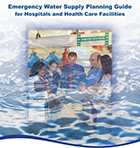
Emergency Water Supply Planning Guide for Hospitals and Health Care Facilities [PDF – 2 MB]
Develop an Emergency Water Supply Plan to prepare for, respond to, and recover from a total or partial interruption of health facilities’ normal water supply.

Guidance on Microbial Contamination in Previously Flooded Outdoor Areas
Learn how to assess the public health risks for using areas after a flood where potential exposure to microbial contamination exists.
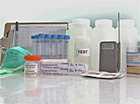
Legionnaires’ Disease Resources for Environmental Health Professionals
Explore Legionella resources for environmental health practitioners, including a Vital Signs report and infographic, environmental sampling videos, toolkit for developing a water management plan, and more.

Logic Model to Improve Program Performance and Control Drinking Water Exposures
Access this tool for recommended strategies for drinking water programs and activities to improve programmatic performance using the 10 Essential Environmental Public Health Services.
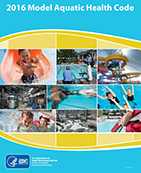
Model Aquatic Health Code (MAHC)
CDC is collaborating with public health and industry experts to develop the Model Aquatic Health Code (MAHC), a free, evidence-based guide to make swimming and other water activities healthier and safer. It is a tool for state and local health departments to use to develop codes and regulations that reduce risk for waterborne disease outbreaks, chemical poisonings, drownings, and other injuries in pool and other recreational water venues.

Private Well Tools and Promotional Materials from Grantees
View videos, posters, and other tools from health departments working to reduce exposures from private wells through CDC’s Safe Water for Community Health (Safe WATCH) program.
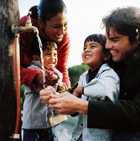
Learn how to identify and prioritize potential threats to water quality at each step in a specific system’s water supply chain and implement best practices to mitigate those threats and ensure drinking-water quality.
Performance Improvement

Environmental Public Health Performance Standards (EnvPHPS)
Use these standards to improve delivery of the 10 Essential Environmental Public Health Services in your community.

Prepare for, conduct, and act upon your EnvPHPS assessment with tools such as a sample invitation letter, facilitator guide, voting cards, response analysis tool, report templates, and more.
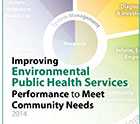
Improving Environmental Public Health Services Performance to Meet Community Needs [PDF – 1.45 MB]
Explore approaches to improve and align your program with broader public health department initiatives.
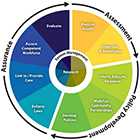
Resources Organized by Essential Services
Find tools to help your program fill performance gaps and contribute to larger performance improvement efforts such as voluntary public health accreditation.
Vector Control

Integrated Pest Management: Conducting Urban Rodent Surveys [PDF – 1.3 MB]
Read this update of the CDC Urban Rodent Surveys manual which includes information about integrated pest management (IPM).

Recommendations for Rodent Control After a Disaster
Reduce the risk of disease or personal injury associated with rodents with these recommendations for residential areas.
- Page last reviewed: February 1, 2017
- Page last updated: September 11, 2017
- Content source:


 ShareCompartir
ShareCompartir